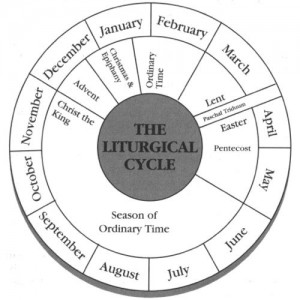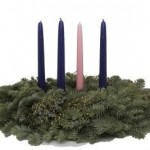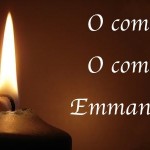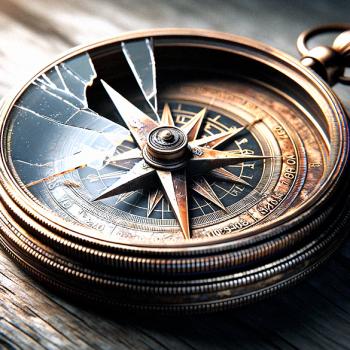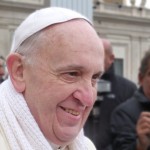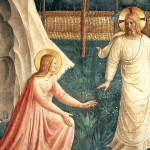[Edited for 2014 dates.]
The beginning of Advent is also the beginning of the liturgical year in many Christian denominations. It’s the date when everything starts over — rotations of scripture readings, cycles of seasons and accompanying color themes.
Advent (which means arrival) starts on the fourth Sunday before Christmas. Since Christmas falls on a Thursday this year, the “four-week” season of Advent this year is only three weeks and four days and begins on November 30. The beginning of Advent also falls after the Frost moon, arguably the real beginning of winter, which was early this year, back on November 6.
Several traditions celebrate their new year around this time. It’s always seemed odd to me, to celebrate beginnings in the middle of winter. But it’s consistent with one of the three typical bases from which to start the year:
- around the Spring equinox, when life begins anew. (Easter, Nisan/Passover, Nowruz)
- at the end of Fall — some time around the very end of harvest season — when the previous cycle of life comes to an end. (Rosh Hashanah, Hijri, Indiction)
- at or near the winter solstice — the point at which days start getting longer again. (Advent/Christmas, Yule, New Year’s)
While the Roman Catholic Church and most of the Protestant world starts its new liturgical year at Advent, around the beginning of December, the Eastern Orthodox Church still starts on September 1, called the Indiction, as the Roman church used to do. I can’t find a specific explanation for why this day was chosen, though tradition holds it was on this day that Jesus entered the synagogue and proclaimed that the scripture predicting the coming of Christ was fulfilled (Luke 4:16-22), and also that on this day the Hebrew people entered the promised land. Notably, this older Christian tradition places it closer to the Hebrew New Year.
Well, one of them anyway.
In Judaism, the start of Passover is at the first full moon after the spring equinox; in 2015 this falls on April 3. But the liturgical year begins two weeks earlier. There are many mystical explanations for why this calendar start date was chosen, including that it coincides with the 6th day of Creation. But the one which relates to Passover is based on Exodus 12:1-14, in which God begins the Exodus process and gives Moses instructions for the Passover which will occur two weeks later, thus the celebration of the Exodus is on Passover, but the recognition of its start with the new year is two weeks earlier. The Jewish civil year, however, begins with Rosh Hashanah, six months later, around the beginning of fall. Rosh Hashanah is seen as the day of judgement, when people’s statuses are recorded in the book of life. Jews say their new year begins on the seventh month, as if things weren’t confusing enough already. Both holidays move around in the Western calendar within a month’s range because Passover (like Easter which is based on it) follows lunar cycles; this year Rosh Hashanah was on September 24, and this coming year, the liturgical year will begin on March 21, which happens to be the equinox.
Most lunar calendar holidays are anchored to certain seasonal (and thus solar) events, so they move around a bit but not more than a month’s cycle. Lacking that tethering to the seasons, Islam’s calendar drifts around the seasons, and against the West’s solar calendar which is 11 or 12 days longer. So Hijri, the Muslim new year, in its traveling around the seasons, this year fell on October 26; but, for example, in 2003 it was on March 4.
That’s not to be confused, though, with the Zoroastrian new year of Persia, Nowruz, which is still celebrated in Iran and many other countries that were once part of the Persian Empire, including Iraq, parts of the Middle East and the “-stan” countries, as well as places where Iranians have settled throughout the world. It is tied to the Spring equinox, like the Jewish calendar, and starts on that day, so it will be on March 20. Though its roots are religious (it’s believed to be the anniversary of the first day of creation), Islamic leaders consider Nowruz a pagan holiday and have attempted to suppress it.
With no luck.
So, many Muslims celebrate the new year twice, once religiously and once in a secular holiday with pagan roots, just as Western Christians do with Advent and New Year’s Day. January 1 originally was a Roman holiday dedicated along with its month to Janus, the god of doorways and beginnings, with one face looking backward and one looking forward. In Germanic and Scandinavian countries during the early Middle Ages, church leaders aggressively discouraged the 12-day pagan festival around New Year’s called Yule, with its custom of exchanging gifts. Some believe increasing the emphasis on Christmas (picking up Yule customs) while reducing the emphasis on Easter in general were concessions to what people were already doing.
To recap:
| September 1 | Indiction — Eastern Christian liturgical new year |
| September 24, 2014 | Rosh Hashanah — Jewish secular new year |
| October 26, 2014 | Hijri — Muslim liturgical new year |
| November 30, 2014 | Advent — Western Christian liturgical new year |
| January 1 | New Year’s Day — Western secular new year |
| March 20, 2015 | Nowruz — Persian secular new year |
| March 21, 2015 | Nisan 1(/Passover) — Jewish liturgical new year |
So, if you’re a Western Christian from a tradition that follows the Revised Common Lectionary, happy new year!
You can see all my Advent-themed pieces together at patheos.com/blogs/philfoxrose/tag/advent/. Please share this link, or just one to my blog, with anyone you think might be interested. Thanks!

